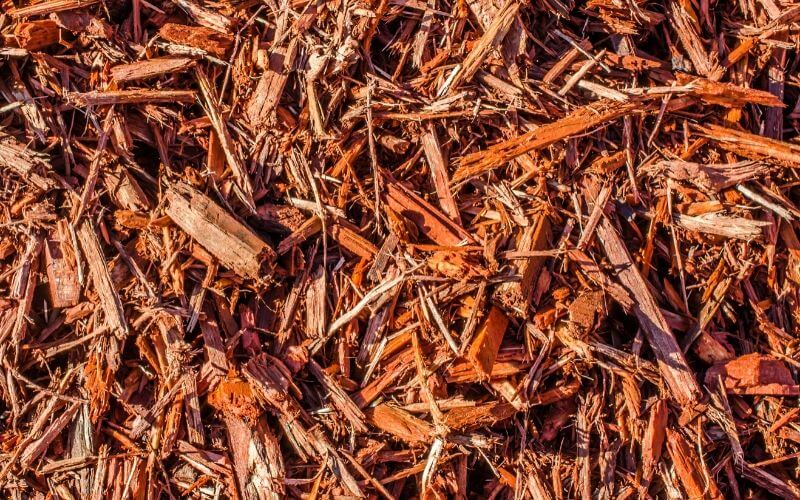
You can’t miss the regal presence of a cedar tree in a garden, but you may miss its humbler presence, low on the ground, surrounding shrubs and flowers, not as a towering conifer but as mulch.
Yes, because cedar mulch is as common in flower beds and pots as it is particular. It is, in fact, a bit “special.”
Cedar mulch is made from clippings and shavings of the bark of cedar trees. It is used to cover the ground, but it cannot be used at all times. In fact, its particular properties, including its insect-repellent smell and effects on the soil, make it excellent for some purposes but counter indicated for others.
So, cedar mulch is not “any mulch,” and you cannot use it as such. This is why we need to talk about its properties, its effects, its uses, and also, of course, its drawbacks… Ready to find out?
What is Cedar Mulch?
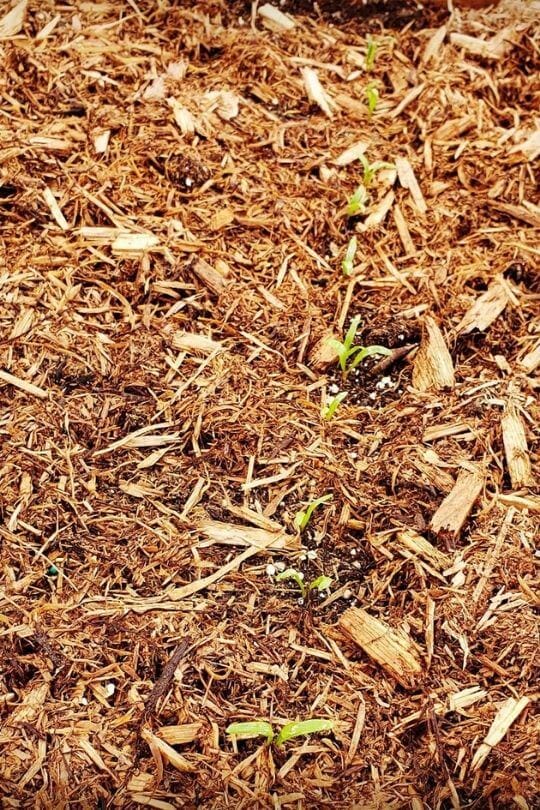
Cedar mulch is made from clippings and shavings of the bark of cedar trees, any of the conifers of the genus Cedrus, majestic trees originally from the Himalayas and Mediterranean Basin.
It is a byproduct of the wood industry, as these trees are sought after for their wood. They grow fast, and they are fairly straight, which makes the wood and the mulch obtained from them renewable.
The mulch itself can be natural or dyed for aesthetic purposes; while the natural color is reddish-brown, it is often died black, yellow, dark brown, or red, which adds to the decorative value of flower beds and gardens when you use it.
Why Do Gardeners Use Mulch?
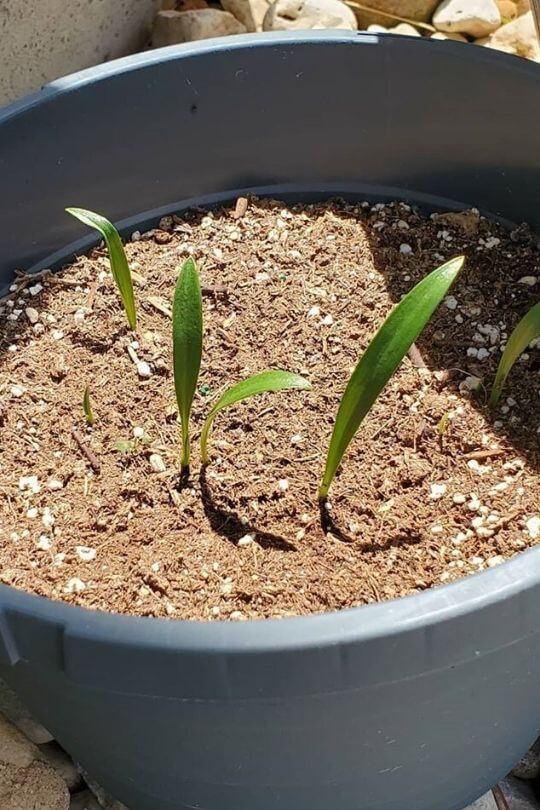
Let’s look at the big picture: why do you see mulch in flower beds, vegetable gardens, and in houseplant pots? You may have seen that mulching is becoming more and more widespread in decorative and vegetable gardens alike.
The core idea is very simple: Nature covers the soil whenever she can. Look around you; when the soil is bare, small plants (grasses, musk, even algae) come first, then bigger ones, and so forth.
When the soil is not covered, it deteriorates. Rainfall, wind, dry conditions and even temperature changes impoverish the soil, which loses nutrients and organic matter, and this is the beginning of the process of desertification.
To give you a shocking fact, when you dig or till the land, it loses 10% of its carbon in 24 hours…
So, part of the organic revolution is the understanding that if you want fertile a soil, you need covered soil.
Reasons Why Mulching is Good for Your Garden
But let’s look at why mulching is good in detail:
Inert and and Non-Inert Mulch
Mulch is not just cedar (or other trees) bark and shavings: anything that forms a layer of protection on the ground could count as mulch, even stones, gravel, cardboard, a blanket, or an old carpet.
But some materials are inert, which means that they never interact with the soil. Others, conversely, will have a low level of interaction.
Stones are inert, for example, but the bark is only partly inert. Why?
Especially if fresh, when it starts to decompose, it absorbs nitrogen from the soil… Later on, however, it may actually give nutrients to the soil as the composition process progresses.
It is also important to check if the mulch you use changes the soil pH. Pine needles are notoriously believed to turn the soil acidic, but this is only true if they are green, while wood bark and clippings may have this effect – including cedar mulch!
However, this is only true if your cedar mulch is not aged. If it is at least one year old, the effect on the acidity of your soil is negligible.
Keep this in mind when you buy it or, if this is the case, make your own cedar mulch.
Pros and Cons of Cedar Mulch
Don’t underestimate the advantages and disadvantages of each type of mulch! It can make a huge difference to your garden because the mulch will stay on the soil for a long time.
Actually, especially with cedar mulch, its qualities and drawbacks are quite marked, and this makes it suitable for some uses, but by no means all. So, let’s see them in detail.
Advantages of Using Cedar Mulch
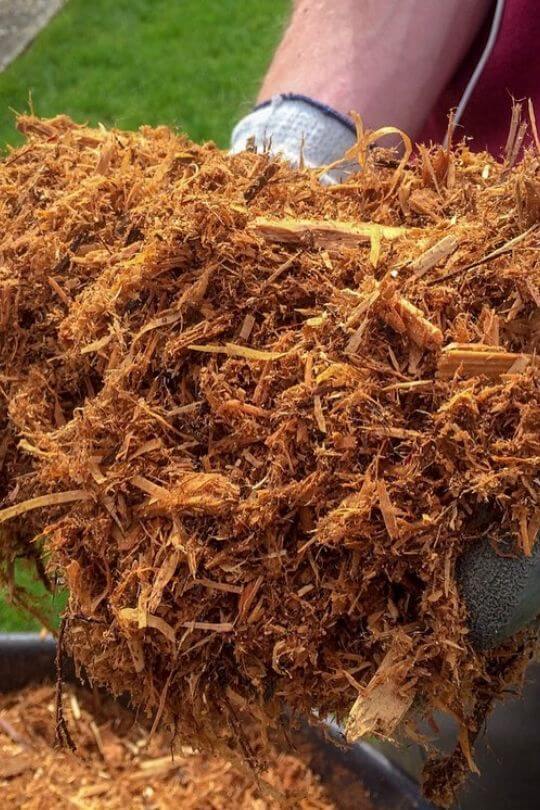
Cedar mulch has some very particular qualities that can be an advantage for your garden. Here they are:
Disadvantages of Cedar Mulch
But cedar mulch is by no means perfect; in fact, its downsides are enough to limit how you can use it in your garden:
Natural or Died Cedar Mulch?
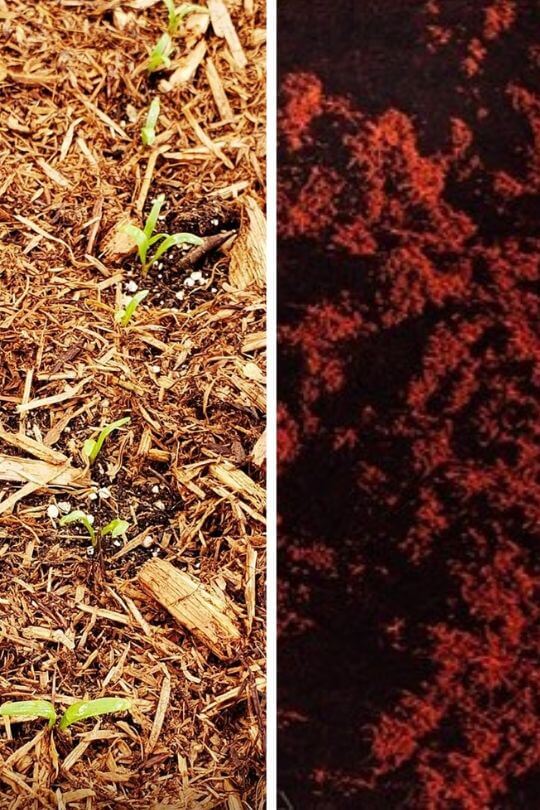
We said that you can get cedar mulch in its natural color or dyed. While red, yellow, brown or black mulch can look great in your garden, it does have a major disadvantage: the dye uses chemicals that will end up in the ground and ultimately even inside your plants.
This is bad for the environment, of course, but also for your plants and, if you intend to harvest them to eat, for yourself and your family.
If you have an interest in healthy living and the environment, dyed mulch is not an option, unless you are ready to fork out a small fortune for cedar mulch dyed with fully natural pigments…
Uses of Cedar Mulch
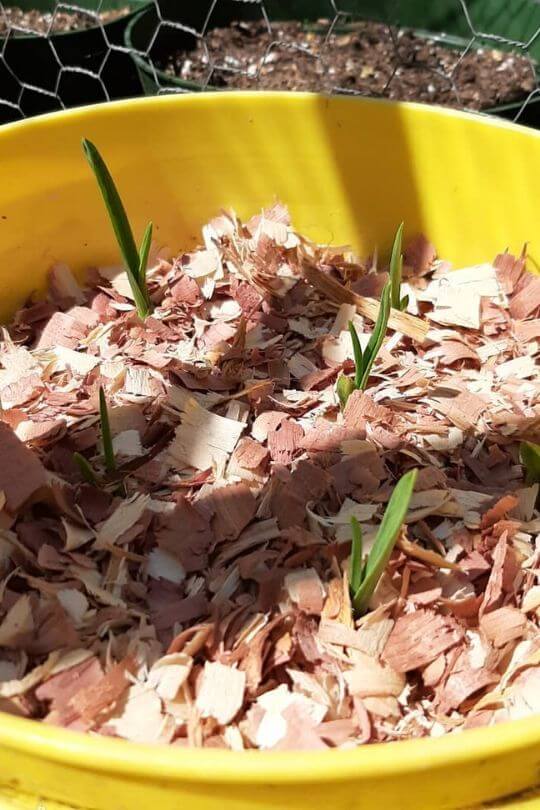
Now, what can you use cedar mulch for? We have already seen how mulch has different “functions”, and cedar mulch is good for some of them:
When to Use and Not to Use Cedar Mulch?
But how and where is cedar mulch used exactly? Here the story gets a bit more complicated…
Let’s investigate the second point; the fact that cedar mulch produces chemicals that affect the growth of your plant is discredited by scholarly studies, but there remain some questions…
So, how can we go about this problem? With caution of course:
Finally, A Very Important Point
Do not use cedar mulch if you want to invite pollinators and regenerate the ecosystem, especially in flower beds, but not just. Even a path can become a barrier to the natural corridors beneficial insects use to move from plant to plant.
As you can see, the actual uses of cedar mulch are restricted. With the wide range of mulches available, choose carefully according to your needs, your plans, your land and, naturally, your planting.
How to Use Cedar Mulch in the Garden?
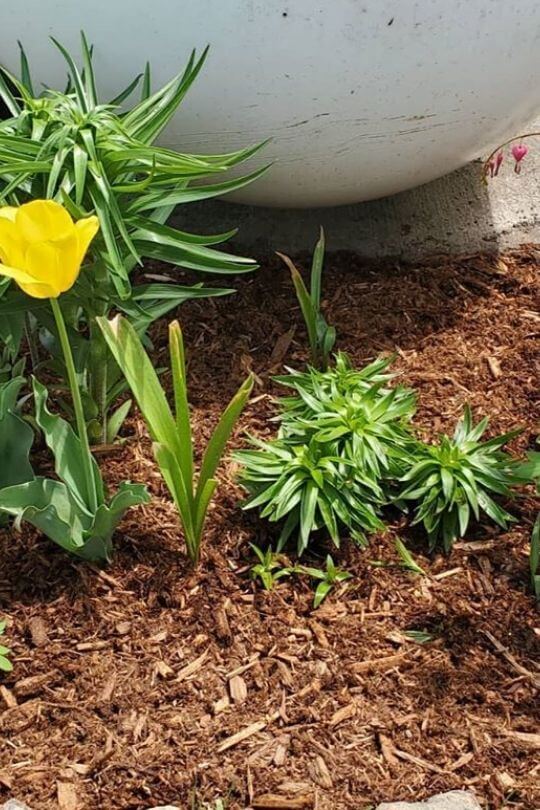
But how do you go about actually mulching your garden with cedar mulch? You cannot just randomly scatter cedar mulch on the ground… You will need, in fact, to follow some key guidelines, and here they are:
That’s about it for a flower bed or group of plants.
How Can You Use Cedar Mulch around a Tree?
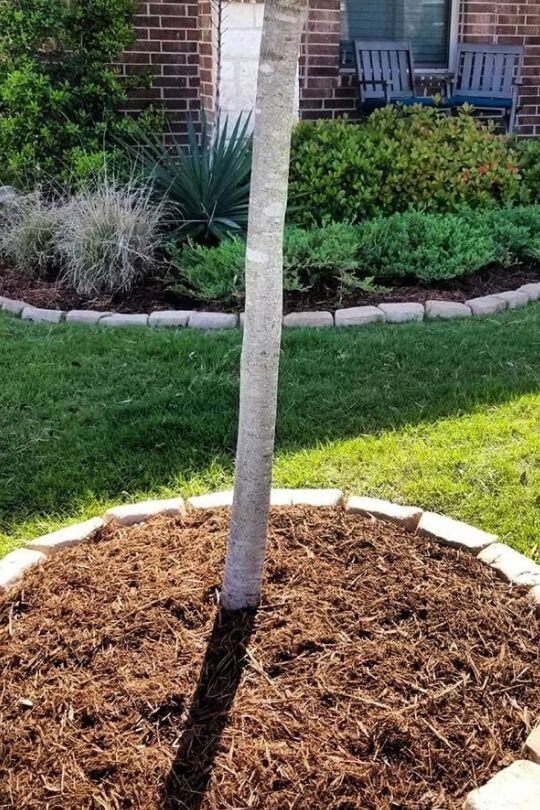
In case you want to mulch around the base of a tree, maybe a fruit tree, you will need follow these steps:
Having mulched an area (a swell) larger than the canopy of the tree means that all the rainwater that falls from the leaves of the tree will go back to its roots.
Can You Use Cedar Mulch in Vegetable Gardens?
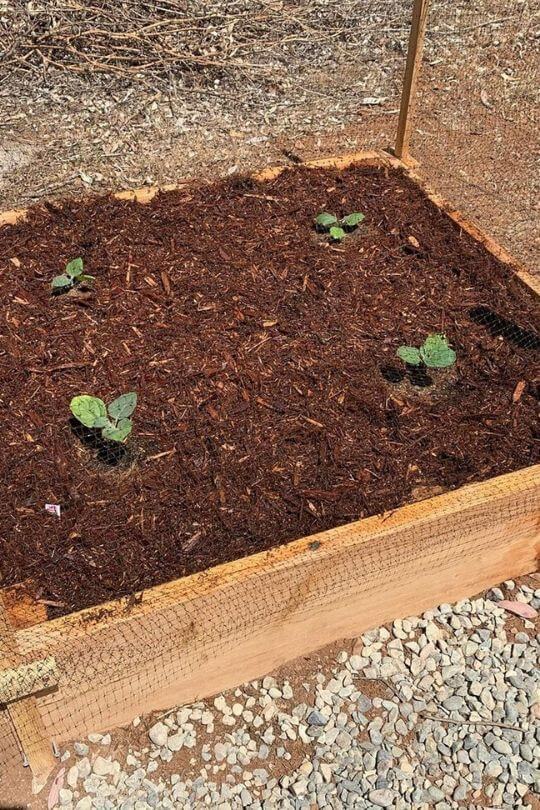
Cedar mulch is far more common in decorative gardens, even in public parks than vegetable gardens.
However, you can use cedar mulch in a vegetable garden if you want. However, there are some serious disadvantages and issues with it.
In case you do use cedar mulch for your vegetable garden though, still make sure it does not touch the stems of your plants.
This is a bit more tricky with many small plants in rows than it is to frame a flower bed or for a large tree…
Most gardeners prefer cheaper, lighter and more easily managed types of mulch for vegetable gardens, like straw, dry leaves or even cardboard…
Cedar Mulch, between Myth and Reality
Cedar mulch is a very famous and even popular type of mulch. It looks good; it lasts for a very none time and it also deters pests from your flowers, plants and crops. However, it may not be the best choice for all purposes…
Because it is has very specific characteristics, it is unsuitable for many jobs, including if you wish to invite butterflies and bees into your garden or land or if your aim is to regenerative the soil.
On the other hand, the long held belief that cedar mulch damages your plants does not seem to be fully true, so you can breathe more easily now on this.
On the whole, the best use of cedar mulch is to cover paths and for large flower beds or trees; it is durable, it is pleasant to look at and, given its price, you may want to keep it for the most decorative elements of your garden.

Written By
Amber Noyes
Amber Noyes was born and raised in a suburban California town, San Mateo. She holds a master’s degree in horticulture from the University of California as well as a BS in Biology from the University of San Francisco. With experience working on an organic farm, water conservation research, farmers’ markets, and plant nursery, she understands what makes plants thrive and how we can better understand the connection between microclimate and plant health. When she’s not on the land, Amber loves informing people of new ideas/things related to gardening, especially organic gardening, houseplants, and growing plants in a small space.

I am having a difficult time deciding whether to use beauty bark..compost or pea gravel in my flower beds. I don’t want to keep redoing it every..and want it to.look nice.
In perennial flowerbeds, cedar and other wood and bark chip mulches conserve soil moisture and insulate plant roots against temperature fluctuations. In addition to making flowerbeds look attractive and tidy, cedar mulch also improves soil texture and suppresses weeds. on other hand Pea gravel absorbs the sun’s heat and retains it in the soil longer than other mulches, it helps the soil retain moisture and prevents soil erosion that can expose roots.
I hope this could help you to choose.
Hello,
I’m kind of confused because I read that you shouldn’t put the mulch around your plants but In some of the pictures it’s touching the stem.Is white cedar chips OK for tomatoes,green peppers in your flowerbeds? Is it necessary to cover the whole flower bed or just the area by your plant with the mulch. Or does covering the whole flower bed keep the moisture in better how often do you have to water then,how do you know to water?
Thank you,Mary
We have a 25 foot row of cedar trees that started out being a hedge, but now they are trees about 40 feet tall with no leaves on the lower 20 feet, They are unsightly and now no longer give any privacy and are a possible fire hazard. We intend to cut down the row. If both the branches and trunks are chipped, does it make a good mulch that can be used on walkways? What about in flower or shrubbery beds? If walked on, is there sticky sap that can be tracked indoors on shoes? Our property has a number of large fir trees with rhodos and a natural forested look. We would like to put the chips to some good use. Thanks. D
If you are anywhere close to Dallas, TX. I would love to have the trunks of the cedar trees. They make beautiful Furniture. Dennis 9/7/2/9/6/5/5/2/7/4. Thanks.
Can cedar mulch be used in a rose garden??? please reply. Thanks you. judy [email protected]
Yes you can. Actually I have found that shredded cedar mulch stays put okay for me in the very windy times and can be fluffed up and around a bit during the season to keep it looking nice.
We plant native specifically for the birds, pollinators etc. I thought of using Cedar Mulch for a dog path but don’t want to hurt the ecosystem. Is there another mulch or groundcover you recommend?
I have put black mulch in my flower garden for the appearance but have noticed several of my knock out rose bushes seem to be burning up. New flowers are not sprouting as usual. Is black mulch the reason?
Dark colored mulch can hold too much heat in and reflect it back at the rose bushes, so you need to replace black mulch under your roses, and mulch any bare ground around them, with shredded cedar mulch or light-colored mulch.
This was a very informative article. Neither my husband or I were aware that cedar mulch was an insect deterrent, although when I think about the use of the wood in closets and chests, that’s just what it does. I’m horrified. We just laid 3 inches of cedar mulch throughout our flower beds which I’ve been switching over to native plants to better serve the butterflies and bees. Will the effectiveness of the cedar mulch as an insect deterrent be reduced each year so I have some hope of attracting them again in the future?
I would not put pea gravel anywhere except a walkway or rock garden. If you put it in your plant beds, you won’t be able to work the soil as needed, or you would have to keep adding more and more, and then the soil would become too rocky to be ideal for plants. It is pretty much intended to keep plants away, rather than encouraging them to grow.